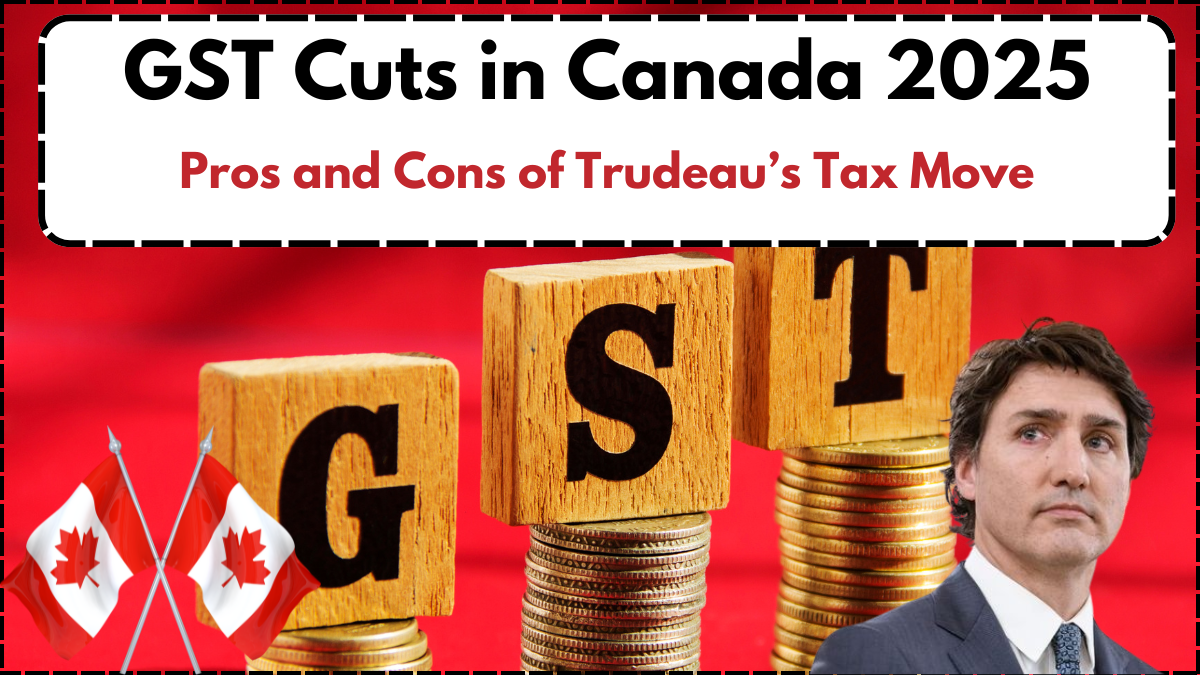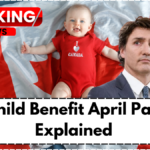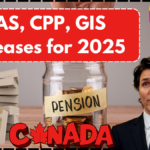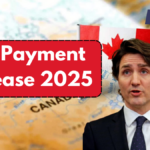To cushion Canadians against escalating living expenses during the high-spending holiday months, Prime Minister Justin Trudeau introduced a nationwide Goods and Services Tax (GST) exemption on selected consumer items. This initiative, rolled out during a period of heightened inflation and economic uncertainty, was designed to offer both short-term relief and economic stimulation.
Running from December 14, 2024, through April 21, 2025, the measure aimed to ease the financial load on families by eliminating the GST — and in applicable provinces, the Harmonized Sales Tax (HST) — on everyday and seasonal items.
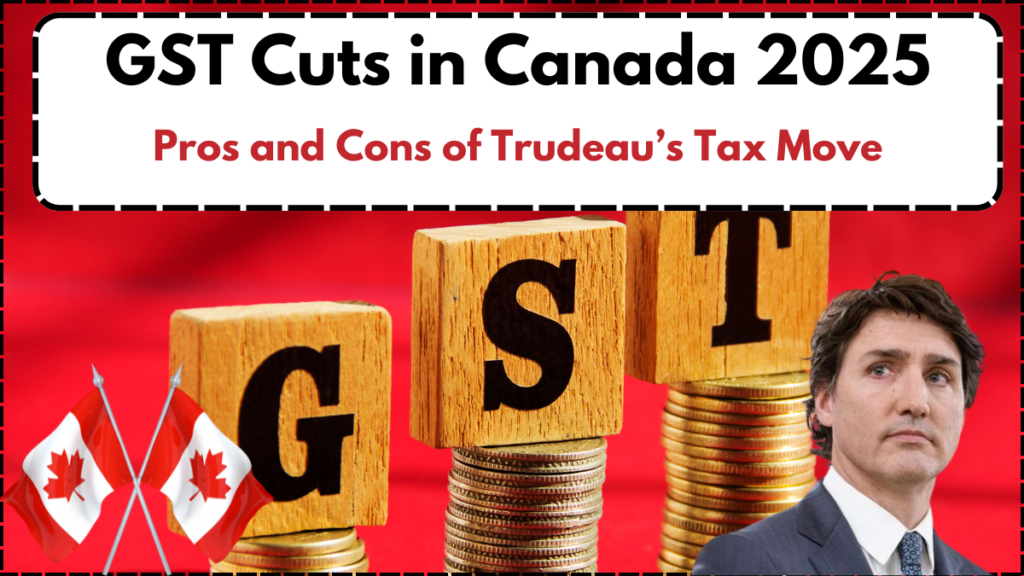
What’s Included in the GST Relief?
The temporary tax break encompassed a wide selection of goods, ranging from daily necessities to seasonal indulgences. The policy applied to both essential and non-essential items — a move intended to accommodate a diverse range of consumer needs.
Items that qualified for the GST exemption included:
-
Ready-to-eat food products (salads, sandwiches, prepared meals)
-
Restaurant dining (both dine-in and takeaway)
-
Snacks and beverages (soft drinks, candies, chips)
-
Alcoholic drinks under 7% ABV (beer, cider, wine coolers)
-
Children’s essentials (winter clothing, baby wipes, diapers, car seats)
-
Books, puzzles, print newspapers
-
Holiday items (Christmas trees and toys)
Notably, certain goods such as high-proof alcoholic beverages and specialized children’s sportswear remained taxable.
Financial Reach and Government Costs
This tax break carried a significant price tag. According to budgetary assessments, the two-month GST suspension was projected to decrease federal revenue by about $1.5 billion, with additional compensation to provinces pushing total government expenditure to nearly $2.7 billion.
As part of the broader relief strategy, over 18 million Canadians earning less than $150,000 annually received a one-time $250 payment in early 2025 — offering direct support beyond just point-of-sale savings.
Analyzing the Benefits of the 2025 GST Cut
The tax holiday brought multiple advantages, especially for average Canadians grappling with the rising cost of living:
-
Household Budget Relief: With no GST on everyday and festive purchases, many families experienced noticeable savings during peak shopping months.
-
Retail Boost: Consumer confidence improved as spending surged, particularly in the food and retail sectors.
-
Equity-Driven Support: Low- and middle-income families, who typically spend a larger share of income on essentials, stood to benefit the most.
-
Holiday Timing: By aligning the policy with the holiday season, the government maximized its impact on seasonal shopping behavior.
Drawbacks and Public Concerns
Despite its perceived advantages, the initiative was not without criticism. Several economists and political analysts flagged potential downsides:
-
Short-Term Focus: Critics argued the measure addressed symptoms rather than root causes of inflation and financial strain.
-
Political Undertones: With federal elections on the horizon, skeptics saw the tax cut as a strategic political maneuver rather than a genuine economic reform.
-
Implementation Hurdles: Businesses faced confusion in applying the exemptions, particularly when differentiating between taxable and non-taxable products.
-
Limited Long-Term Impact: Experts pointed out that while consumers saved temporarily, the cut may not significantly change broader economic behavior or resolve structural fiscal issues.
To cushion Canadians against escalating living expenses during the high-spending holiday months, Prime Minister Justin Trudeau introduced a nationwide Goods and Services Tax (GST) exemption on selected consumer items. This initiative, rolled out during a period of heightened inflation and economic uncertainty, was designed to offer both short-term relief and economic stimulation.
Running from December 14, 2024, through April 21, 2025, the measure aimed to ease the financial load on families by eliminating the GST — and in applicable provinces, the Harmonized Sales Tax (HST) — on everyday and seasonal items.
What’s Included in the GST Relief?
The temporary tax break encompassed a wide selection of goods, ranging from daily necessities to seasonal indulgences. The policy applied to both essential and non-essential items — a move intended to accommodate a diverse range of consumer needs.
Items that qualified for the GST exemption included:
-
Ready-to-eat food products (salads, sandwiches, prepared meals)
-
Restaurant dining (both dine-in and takeaway)
-
Snacks and beverages (soft drinks, candies, chips)
-
Alcoholic drinks under 7% ABV (beer, cider, wine coolers)
-
Children’s essentials (winter clothing, baby wipes, diapers, car seats)
-
Books, puzzles, print newspapers
-
Holiday items (Christmas trees and toys)
Notably, certain goods such as high-proof alcoholic beverages and specialized children’s sportswear remained taxable.
Financial Reach and Government Costs
This tax break carried a significant price tag. According to budgetary assessments, the two-month GST suspension was projected to decrease federal revenue by about $1.5 billion, with additional compensation to provinces pushing total government expenditure to nearly $2.7 billion.
As part of the broader relief strategy, over 18 million Canadians earning less than $150,000 annually received a one-time $250 payment in early 2025 — offering direct support beyond just point-of-sale savings.
Analyzing the Benefits of the 2025 GST Cut
The tax holiday brought multiple advantages, especially for average Canadians grappling with the rising cost of living:
-
Household Budget Relief: With no GST on everyday and festive purchases, many families experienced noticeable savings during peak shopping months.
-
Retail Boost: Consumer confidence improved as spending surged, particularly in the food and retail sectors.
-
Equity-Driven Support: Low- and middle-income families, who typically spend a larger share of income on essentials, stood to benefit the most.
-
Holiday Timing: By aligning the policy with the holiday season, the government maximized its impact on seasonal shopping behavior.
Drawbacks and Public Concerns
Despite its perceived advantages, the initiative was not without criticism. Several economists and political analysts flagged potential downsides:
-
Short-Term Focus: Critics argued the measure addressed symptoms rather than root causes of inflation and financial strain.
-
Political Undertones: With federal elections on the horizon, skeptics saw the tax cut as a strategic political maneuver rather than a genuine economic reform.
-
Implementation Hurdles: Businesses faced confusion in applying the exemptions, particularly when differentiating between taxable and non-taxable products.
-
Limited Long-Term Impact: Experts pointed out that while consumers saved temporarily, the cut may not significantly change broader economic behavior or resolve structural fiscal issues.
GST Holiday Summary
| Category | Positive Impacts | Potential Downsides |
|---|---|---|
| Consumer Spending | Increased retail activity and affordability | Risk of post-holiday inflationary pressures |
| Government Revenue | Offered direct fiscal relief to consumers | Caused a substantial shortfall in tax collection |
| Political Perception | Seen as supportive of middle-class Canadians | Interpreted by some as election-driven populism |
| Retail Sector | Boost in sales and consumer turnout | Operational confusion over item eligibility |
| Long-Term Economic Value | Immediate cost relief | Temporary solution lacking lasting economic strategy |
Final Thoughts
The 2025 GST holiday was a bold move by the Canadian government to offer short-term relief during a season when spending typically spikes. While the tax exemption and financial payouts helped reduce pressure on household budgets and stimulated spending, its temporary nature left many wondering about the long-term roadmap for economic recovery.
Whether this initiative sets the tone for future consumer-friendly tax reforms remains to be seen. For now, it served its purpose — offering a moment of financial breathing room for millions during an otherwise challenging economic landscape.
Frequently Asked Questions (FAQs)
What time frame did the GST holiday cover?
The GST and HST relief program was active from December 14, 2024, to April 21, 2025.
Who benefited most from this policy?
Low- and middle-income Canadians were the primary beneficiaries, especially those earning below $150,000 annually, as they also received a $250 financial aid cheque in early 2025.
Did this tax cut apply across all of Canada?
Yes. While the GST holiday applied nationwide, provinces using the HST system also saw the full HST waived on qualifying items.
Were all goods included in the tax relief?
No. Only specific categories were covered, including food, non-alcoholic drinks, some alcohols, and children’s items. Goods like spirits and high-ABV beverages were excluded.
Will this GST exemption be extended?
As of now, the tax holiday ended on April 21, 2025, and there have been no official announcements about an extension or permanent tax reform.
For More Information Click Here
Pari is a passionate writer known for captivating stories that blend imagination and reality. Inspired by travel, history, and everyday moments, Pari crafts narratives that resonate deeply with readers.
